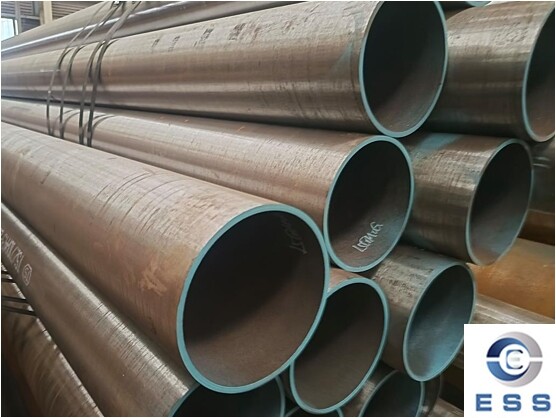
The wall thickness of the high-pressure
boiler seamless
pipe is not the thicker the better, but needs to be scientifically designed
and selected according to the actual working conditions, material properties,
safety specifications and economy. What are the potential problems of excessive
wall thickness? How to scientifically determine the wall thickness?
Potential
problems of excessive wall thickness
1. Increased material cost
The increase in the wall thickness of the
boiler seamless pipe will directly lead to an increase in the use of steel
pipes and an increase in material costs. Especially for special steels such as
high-pressure boiler
tube, the cost difference may be very significant. In addition, in some
hydraulic systems, the manufacture of hydraulic
tubes is also affected by the wall thickness.
2. Increased weight and installation
difficulty
Excessively thick tube walls will increase
the overall weight of the boiler system, put higher requirements on the
supporting structure, and increase the difficulty of installation and welding,
which may affect the construction efficiency.
3. Decreased thermal efficiency
The excessive wall thickness of the boiler
seamless pipe will reduce the heat conduction efficiency, resulting in uneven
heat transfer during boiler operation, which may affect the overall energy
efficiency and even cause local overheating or stress concentration problems.
4. Thermal stress risk
Under high temperature and high pressure
environment, excessively thick pipe wall may generate greater thermal stress
due to uneven thermal expansion. Long-term operation may accelerate fatigue
damage and shorten service life. It may also affect the valves and other
matching valves.
Core factors for scientifically
determining wall thickness
1. Working conditions
Pressure and temperature: According to the
design pressure and temperature of the boiler, the minimum theoretical wall
thickness is calculated by formula (such as the wall thickness calculation
formula in ASME B31.1 or GB 5310 standard).
Medium characteristics: If the medium is
corrosive or contains impurities, additional corrosion allowance is required.
2. Material properties
The strength grade of the steel of the
seamless pipe (such as 20G, 15CrMoG, etc.) determines its pressure bearing
capacity. High-strength materials can appropriately reduce the wall thickness.
High-temperature creep resistance, hydrogen corrosion resistance, etc. need to
match the boiler operating environment.
3. Safety specifications and standards
Boiler seamless pipes must comply with
national standards or international standards (such as ASME SA-213) to ensure
that the wall thickness meets the safety margin requirements.
4. Balance between economy and service life
On the premise of meeting safety, choose
the solution with the best cost and performance to avoid over-design.
Suggestions for practical application
1. Strictly follow the design
specifications
Use the formula to calculate the minimum
wall thickness and refer to relevant standards and specifications. For
different types of pipes, the wall thickness also needs to be determined
according to their specific design specifications.
2. Pay attention to the manufacturing
process
Select high-quality seamless pipes to
ensure the uniformity of wall thickness (tolerance is usually ±10%) and avoid local weak points.
3. Adjustment of working condition
adaptability
For boilers in highly corrosive
environments or frequent start-up and shutdown, the wall thickness can be
appropriately increased or more corrosion-resistant materials (such as
composite stainless
steel pipes) can be selected.
Conclusion
The wall thickness of high-pressure boiler
seamless pipes needs to be determined through scientific calculations and
comprehensive evaluations. Blindly increasing the wall thickness not only
increases costs, but may also cause reduced thermal efficiency and structural
risks. The key is to balance performance, life and economy while meeting safety
specifications. It is recommended to consult professional engineers or refer to
the boiler design manual when selecting to ensure that the material selection is
reasonable and reliable.
Read more: Seamless pipe weight calculation formula













 Eastern Steel Manufacturing Co.,Ltd not only improve product production and sales services, but also provide additional value-added services. As long as you need, we can complete your specific needs together.
Eastern Steel Manufacturing Co.,Ltd not only improve product production and sales services, but also provide additional value-added services. As long as you need, we can complete your specific needs together.










